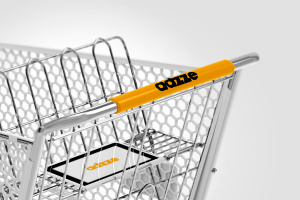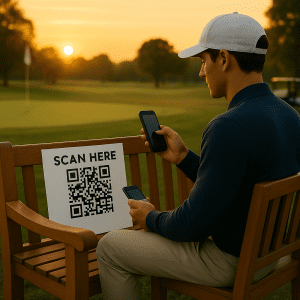In the competitive world of out-of-home (OOH) advertising, grocery environments offer one of the most consistent touchpoints for consumer engagement. One strategy that has been gaining momentum is shopping cart advertising. But while many brands understand the value of this high-visibility format, few fully grasp how shopping cart advertising rates vary based on demographics. For marketing professionals aiming to maximize ROI, it’s essential to understand the pricing landscape by region, income bracket, and shopper behavior.
This blog will dive deep into how shopping cart ad pricing shifts across demographic zones, what factors influence those costs, and how marketers can make informed decisions to reach their ideal customer efficiently.
 Why Demographic Zones Matter in Shopping Cart Advertising
Why Demographic Zones Matter in Shopping Cart Advertising
Unlike broad-based digital campaigns, shopping cart advertising is a hyper-local strategy. It places your brand directly into the hands of consumers in physical retail spaces, typically within supermarkets and grocery chains. These locations naturally segment themselves by geography and socioeconomic status, meaning that a campaign in a suburban neighborhood will perform differently from one in an urban center.
Key reasons demographic zones matter:
Purchasing power varies by location.
Shopper behavior changes based on income, family size, and cultural norms.
Some zones offer higher foot traffic, boosting impressions per cart.
Are you curious to see if this works for you? See our Grocery Cart Advertising solutions!
Factors That Affect Shopping Cart Advertising Rates by Zone
Household Income and Affluence Levels
Higher-income areas often command higher shopping cart advertising rates. The rationale is simple: brands are willing to pay more to reach consumers with more disposable income.
Example: A premium organic food brand targeting affluent consumers may choose to place shopping cart ads in Whole Foods locations in upscale suburbs. The cost per cart will be higher, but so will the average cart value and product alignment.
Store Type and Brand Recognition
Big-name grocery chains with national recognition, especially those in high-income areas, typically charge more for shopping cart ad placements. Independent or regional stores in rural or working-class zones might offer lower rates but also come with smaller reach.
Typical pricing ranges:
Upscale urban locations: $25–$45 per cart/month
Suburban middle-income locations: $15–$25 per cart/month
Rural or low-income areas: $8–$15 per cart/month
Foot Traffic and Store Size
Larger stores with higher foot traffic will naturally increase your impressions per dollar spent. While the shopping cart advertising rates may be slightly higher in these locations, the CPM (cost per thousand impressions) could end up being more favorable.
Tip: Always calculate your cost per impression when evaluating ad rates, not just the upfront spend.
Cultural and Behavioral Segmentation
Some demographics are more likely to respond to certain types of shopping cart ads. For instance, bilingual ads may be more effective in Hispanic-majority zones, while eco-conscious messaging could resonate more in liberal, urban environments.
 How to Choose the Right Zone Based on Ad Goals
How to Choose the Right Zone Based on Ad Goals
If your objective is brand visibility, you might prioritize locations with high foot traffic and broader appeal. But if you’re after direct response or conversions, targeting specific demographic zones will yield stronger returns.
High-Income Zones
Best for: Luxury products, wellness, organic foods, financial services.
Strategy: Focus on aesthetics and quality; emphasize lifestyle appeal.
Middle-Income Suburbs
Best for: Everyday consumer products, family-oriented brands.
Strategy: Offer value-driven messaging, bundle promotions, and savings.
Rural or Urban Low-Income Areas
Best for: Discount retailers, quick-service restaurants, healthcare services.
Strategy: Highlight convenience, accessibility, and affordability.
Comparing Shopping Cart Advertising Rates: Suburb vs. City vs. Rural
Location Type | Avg. Rate/Cart | Impressions/Month | Common Retail Chains |
Urban High-Income | $30 – $45 | 12,000+ | Whole Foods, Trader Joe’s |
Suburban Middle | $15 – $25 | 8,000 – 10,000 | Kroger, Publix, Stop & Shop |
Rural Low-Income | $8 – $15 | 4,000 – 6,000 | Piggly Wiggly, Food Lion |
Tips for Negotiating Shopping Cart Advertising Rates by Demographic Zone
Bundle by Location: Many cart ad providers offer discounts for multi-store buys across similar zones.
Test and Scale: Start with a few zones to measure performance, then expand into higher-priced markets.
Request Demographic Reports: Get data on foot traffic, age range, income level, and family composition.
Use Geo-Fencing Analytics: Track consumer visits and engagement post-campaign.
Case Study: Regional Fast Food Chain Boosts ROI with Zone-Based Cart Ads
A regional fast food brand focused its shopping cart advertising campaign in suburban neighborhoods surrounding new store openings. By selecting middle-income grocery chains with moderate shopping cart advertising rates, they achieved the following:
35% increase in foot traffic to new locations.
Cost per acquisition (CPA) 40% lower than digital ads.
Over 22,000 direct impressions from 10 locations in 3 weeks.
The takeaway? Targeted shopping cart ad placement by zone outperformed even their social media ads.
Closing Thoughts: Smart Budgeting with Shopping Cart Advertising Rates
When it comes to maximizing your media spend, understanding how shopping cart advertising rates shift across demographic zones is critical. From upscale urban centers to price-sensitive rural communities, your message can be adapted and your ROI optimized.
In the age of hyper-targeting and personalization, the grocery cart has become more than just a vehicle for food—it’s a direct line to your ideal customer.


 Why Demographic Zones Matter in Shopping Cart Advertising
Why Demographic Zones Matter in Shopping Cart Advertising How to Choose the Right Zone Based on Ad Goals
How to Choose the Right Zone Based on Ad Goals



